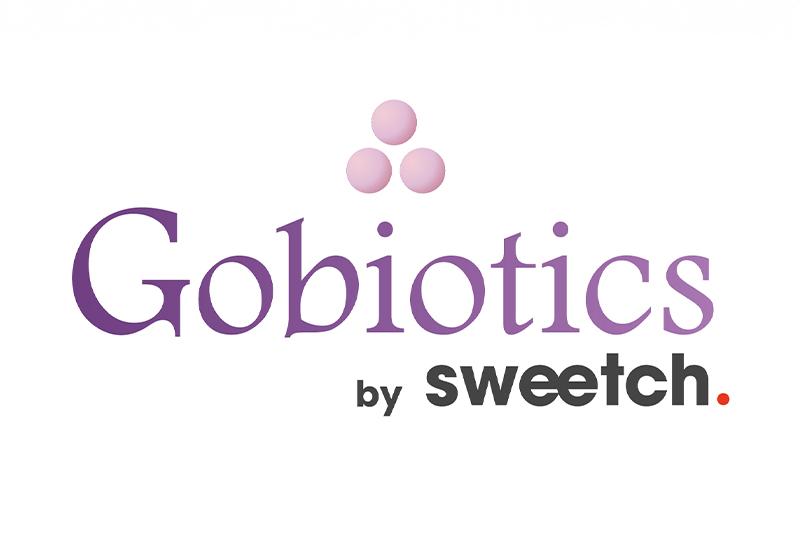The skin microbiota, as our most outer skin layer, is in a constant contact with surrounding environment. This environment is constantly changing and often brings harsh conditions such as dryness, UV radiation, frost, pollution or disinfectants.
Another condition that disturbs our skin microbiota is application of cosmetic products containing preservatives. Weakened skin microbiota will recover, but meanwhile, our skin is more prone to be colonised by foreign microorganisms.
High molecular weight inulin can strengthen the skin microbiota so it can suffer les and recover faster after each disturbance caused, inter alia, by usage of preservatives.
It helps the skin microbiota to fulfil its protective task. Investigation shows, that in the presence of inulin the diversity of skin microbiota is also protected better. This beneficial effect of inulin counteracts the harmful influence of preservatives.
Introduction
The outermost layer of the skin is the microbial layer: the skin microbiota. This microbial layer has a unique strategy to protect the skin.
The members of the skin microbiota produce substances such as antimicrobial peptides, enzymes and acids (1,2). These substances turn the top layer of the skin into a poisonous shield for foreign microorganisms. Thanks to this poisonous living armour the skin endures constant attacks from hostile microorganisms.
Unlike the gut microbiota, the skin microbiota is constantly in contact with a hostile, ever changing environment. The gut flora is nicely protected from UV light.
The gut environment is cosy warm and sufficiently humid for microbial proliferation. In a wealthy person food and drinks are constantly and abundantly delivered to support the microbial life. In one word the gut is a paradise for microorganisms.
The microorganisms on the skin are constantly exposed to UV light, to a dry environment with constantly changing temperatures. The food supply is scarce even in a wealthy person. The skin microbiota only receives dead skin cells, sebum, sweat and oxidised skin lipids for diner.
A special case is the skin microbiota of older skin (50+). The older skin produces less skin cells, less skin lipids and less sebum. Because of aging, the skin microorganisms receive even less food.
In one word the skin surface is a hell for microorganisms (3).
Moreover, the skin microbiota is also constantly exposed to cosmetic formulations, containing an endless collection of different substances such as emulsifiers, surfactants, essential oils, perfumes and preservatives.
Cosmetic products are mainly intended to keep the skin barrier in good condition. Their effect on the skin microbiota remains unknown.
Preservatives are the prime suspect to cause an adverse effect on the skin microbiota’s balance (4). Preservatives are always present in cosmetic formulations containing water.
They prevent microbial contamination of the cosmetic product. When a cream, containing preservatives, is applied on the skin, the preservatives do not penetrate the deeper skin layers. They stay mainly on the skin.
Preservatives stay in the microbial community and continue their anti-microbial activity. For the preservatives the skin microbiota is just another contamination that needs to be eliminated.
The purpose of this study was to monitor the effect of a high concentration of classic preservatives on the skin microbiota and the defensive effect high molecular weight Inulin has on the skin microbiota in these circumstances.
Also, the indirect hydrating effect has been monitored. This hydrating effect is compared to high molecular weight hyaluronic acid.
Materials and methods
Influence of preservatives and the protective effect of Inulin
To study the effect of preservatives and high molecular weight Inulin on the skin microbiota, a cosmetic cream was prepared according to the following formulation:
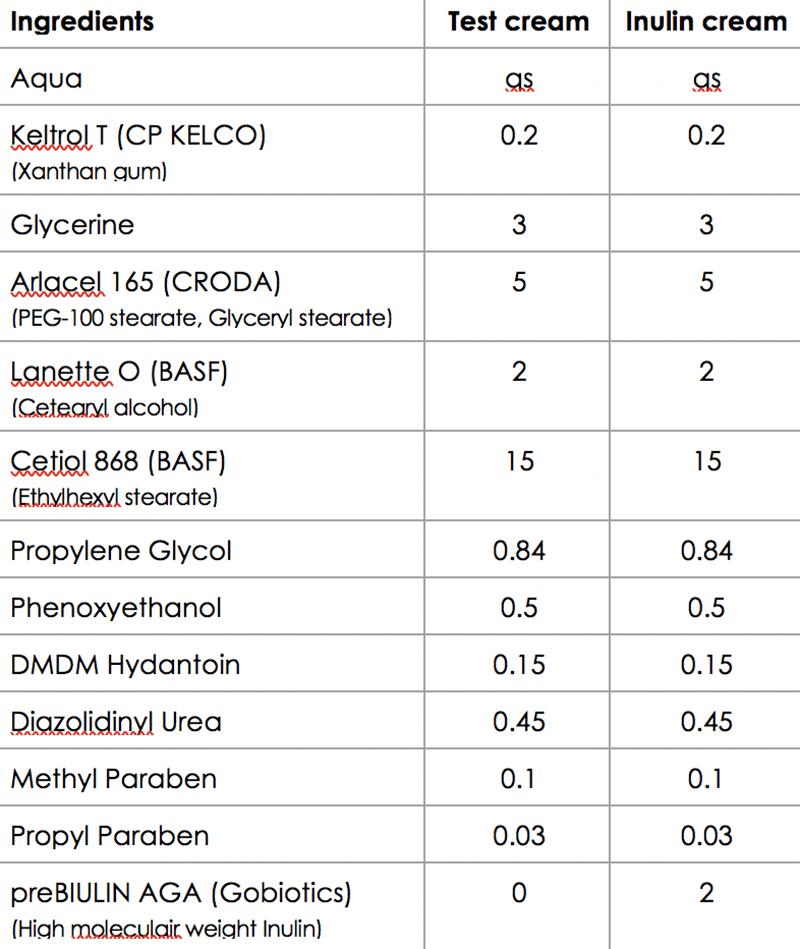
The chosen preservative system was Phenoxyethanol 0.5% + DMDM Hydantoin 0.15% + Diazolidinyl urea 0.45% + Methyl paraben 0.1% + Propyl paraben 0.03%. This is quite a strong mixture to provide maximum protection against microbial contamination.
The high molecular weight Inulin has an average molecular weight of 2kDa. The Inulin is extracted from Cichorium Intybus and Agave Tequillana and is especially purified for cosmetic applications.
This Inulin (GFn) is a mixture of linear inulin with β(2,1) bounds and branched inulin with β(2,1) and β(2,6) bounds.
The determination of parameters was performed on a marked area of the skin of the cheeks, before application. The test cream and inulin cream were applied with a spatula on this marked area. The amount of cream used was 2mg/cm2 (+/- 0,05mg/cm2). The creams were applied once. The following code was used:
- T0 - before application, determination of parameters
- T1 - 1 hour after application, determination of parameters
- T4 - 4 hours after application, determination of parameters.
The following parameter was monitored:
Counting the skin microbiota
The counting of bacteria, fungi and molds was performed using 3M BTM2 Nutrient Agar with TTC and Malt extract Agar dip slides. The dip slides were pressed on the test area for 30 sec.
The dip slides were then incubated at 37°C in a S&M-Cultura. The Counting was performed after 48 h of incubation.
Profiling species
DNA was taken from the skin with DNA-swabs before application and after using both creams for 14 days.
The skin microbiota was profiled through a detailed analysis and interpretation of the results sequencing-based 16S or IST profiling experiment.
Short sequence reads were generated using the Illumina MiSeq platform. The assignment of sequence reads into Operational Taxonomic Units (OTUs) was performed using a proprietary pipeline.
The classification of bacterial organisms was based on a combination of 16S gene databases. The classification of fungal organisms was based on the UNITE ITS gene database. The end result is a list of OTUs and corresponding frequencies.
The hydration tests
Two hydration tests were performed. For both studies a cream was prepared according to the following formulation:
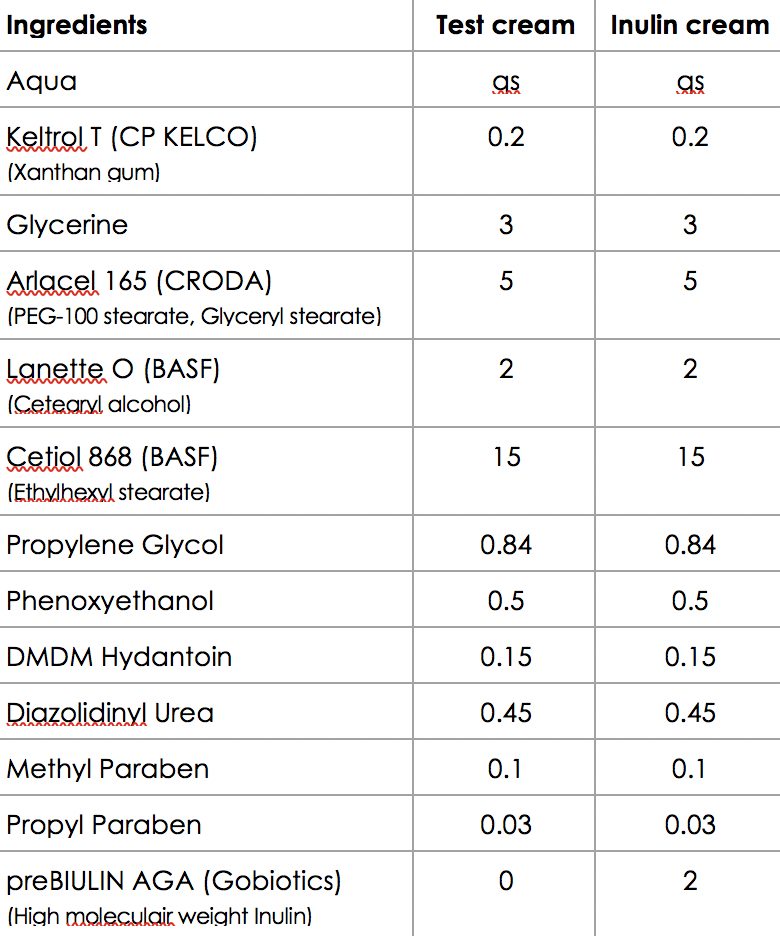
The subjects were tested with the placebo and with the Inulin cream on their forearm.
An amount of 2mg/cm2 (+/- 0.05mg/cm2) was applied. The room temperature was 21 +/- 1°C, the humidity was 45% +/- 5%. The hydration performance of high molecular weight Inulin was compared to the placebo, containing 0.1% Hyaluronic acid with molecular weight of 1.6MDa.
High molecular weight hyaluronic acid is recognised for its superior hydrating properties.
In both studies the Corneometer was used to measure the hydration of the skin.
The Corneometer is a device that measures the capacitance of the skin surface. The Capacitance is in direct relation with the dielectric constant of the stratum corneum.
The dielectric constant is in direct relation with the water content of the skin. The measurements were carried out in compliance with the guidelines described by EEMCO, In vitro calibration of the capacitance method (Corneometer MPA 5 CPU and conductance method (Skicon 200) for the evaluation of the hydration state of the skin.
The capacitance is expressed digitally in arbitrary units (a.u.). The probe head (7x7mm) consisting of a condenser was applied on the skin surface at constant pressure (3.5N).
The measuring principle is based on distinctly different dielectric constants of water (appr. 81) and most other materials (<7). 5 measurements were performed on each test area and the mean was used to define the hydration state of the stratum corneum.
Short term hydration test
The creams were applied once. The following measurements were performed:
- T0 - Skin hydration before application
- T10 -Skin hydration 10 min after application
- T30 -Skin hydration 30 min after application
- T1- Skin hydration 1h after application
- T4- Skin hydration 4h after application.
Long term hydration test
The creams were applied twice a day for a period of 28 days. The following measurements were performed:
T0- Skin hydration before first application
T28- Skin hydration 8-12 hour after the last application.
Results and Discussion
Influence preservatives and the protective effect of Inulin
The evolution of the number of skin microbiota (Bacteria + Fungi + Yeast) is shown in graph 1.
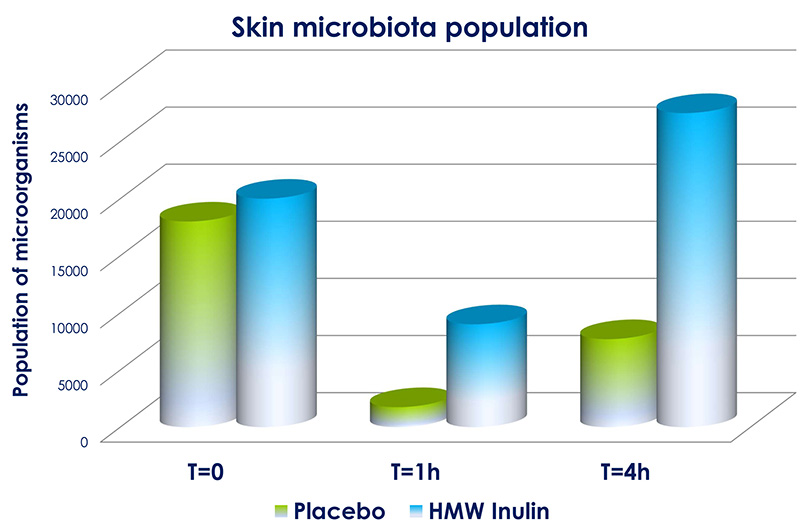
Graph 1: Evolution of the skin microbiota
Before the application of both creams the number of microorganisms (bacteria + fungi) was determined. The detailed results of the number of bacteria and fungi is presented in table 1.
Table 1

Evolution of skin microbiota, detailed for fungi and bacteria
The cream, containing preservatives had a devastating effect on the skin microbiota. Both protective fungi and bacteria were wiped out for 90% within 1 hour. Even 4 hours later the bacteria and fungi were far from recovered.
The protective bacteria were still missing 65% of their initial population, while the fungi are still missing 50% of their original task force. After 4 hours the total protective skin microbiota was still missing 57% of its initial population.
In case of using the high molecular weight Inulin cream, the adverse effect of the preservative was significantly reduced and even restored. One hour after application the bacteria were reduced by 50% as opposed to the 90% in the case where preservatives were used alone.
The effect on fungi is less significant. The beneficial effect of high molecular weight Inulin is most spectacular after 4 hours application. The skin bacteria force increased by 80%. The fungi are only missing 33% of their initial population, compared to the 50% in the case of preservatives being used alone.
Through DNA-sequencing the different species participating in the skin protection are determined. These results are reported through 3 understandable diversity indexes:
Richness = R = Number of different species, without considering the abundance. For example, when 2 species are present, 99.99% of one 0.01% of another, R = 2. When there is 50% of one and 50% of another, R=2. A higher R value means that there are more different species present.
Shannon index = H’= An index that considers the amount of different species and their abundance. When 2 species are present, 99.99% of one and 0.01% of another, H’ = -460.
When there is 50% of one and 50% of another, R=-398. A higher H’ value means that there are more different species present in a substantial amount.
Simpson index = λ= A value that describes how different the different species are. S. hominis is related to S. epidermidis, while a P. Acnes is very different. A higher λ value indicates less diversity.
In table 2 and graph 2 the evolution of the diversity compared to the initial state (before the application of) is shown.
Table 2

The evolution of diversity compared to the initial state
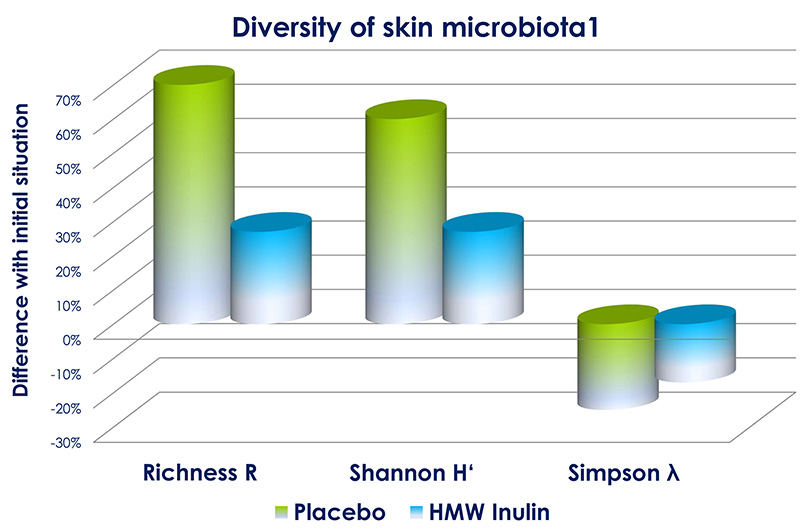
Graph 2: The evolution of the diversity compared to the initial state.
All subjects had a healthy skin. This means that their skin microbiota was in balance and that the diversity was healthy. When the skin becomes infected one or more bacteria species become dominant (5).
This leads to poor diversity. When the skin is healthy, the diversity should not be altered, as it is already in balance.
After applying the cream with the tested preservation system, 3 diversity indexes indicate that the diversity significantly deviates from its original healthy state: R increased by 70%, H’ increased by 60%, while λ decreased by 25%.
After applying the cream where the preservatives are combined with high molecular weight Inulin, the healthy initial diversity is not significantly disturbed.
A possible explanation for this significant increase of microbial diversity after 4 hours is that the skin lost most of its natural protection. The weakened skin microbiota cannot effectively prevent the invasion of foreign microorganisms.
The living armour is no longer as anymore towards hostile microorganisms. These foreign microorganisms increase the risk of skin discomfort such as itching, redness, pimples and, in the worst case: skin damage.
Hydration test
When a cream containing 1.5% high molecular weight Inulin is applied on the skin and the hydration is compared to the placebo containing 0.1% high molecular hyaluronic acid, it is observed that high molecular weight inulin cream:
- hydrates faster than hyaluronic acid cream (after 10min and 30 min)
- hydrates longer than hyaluronic acid cream (after 4 hours).
The results are presented in graph 3.
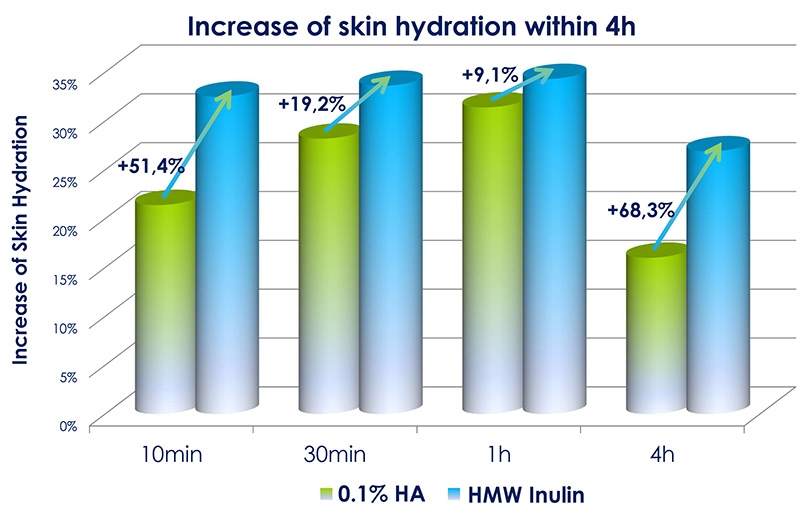
Graph 3: Fast hydration test comparing inulin to placebo containing hyaluronic acid.
In the test where the cream was used for 28 days the high molecular weight Inulin surpasses the hydration performance of high molecular weight hyaluronic acid by 20% (graph 4).
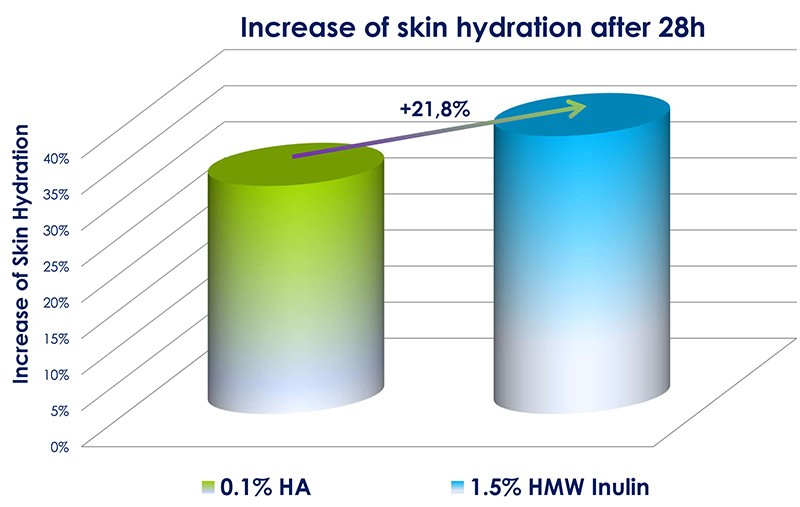
Graph 4: 28 days hydration test comparing Inulin to placebo containing hyaluronic acid.
The fact that high molecular weight inulin outperforms high molecular weight hyaluronic acid in hydration performance is surprising. Both molecules are polysaccharides and hydrate though a hygroscopic mechanism: they can physically bind water.
When a molecule is larger, it can bind more water. It hydrates better. The tested hyaluronic acid has a molecular weight that exceeds the molecular weight of Inulin by 800 times. Logically, hyaluronic acid should hydrate better than inulin.
A possible explanation is that the hydration was realized via the skin microbiota: a microbial hydration. The members of the microbial skin population need to construct a biofilm to survive.
The biofilm is necessary to improve gene expression, to attach the microorganisms to the skin surface and to entrap water. Entrapping water is crucial as the skin microorganisms live in a dry environment.
Each molecule of water counts. It has been demonstrated that high molecular weight Inulin is able to support the skin microbiota (graph 1). Because of this support, the construction of the hydrating biofilm was indirectly improved and hence the hydration.
Conclusion
Preservatives can have a devastating effect both on the balance of our main skin defence, the skin microbiota and their number. Especially in sensitive and weaker skin, such as older skin this disturbing effect on the skin microbiota may result in skin disorders.
Older skin already has a reduced microbial population because of a slower proliferation of keratinocytes. High molecular weight inulin can restore and even improve the skin microbiota in the presence of seriously disturbing preservatives.
High molecular weight inulin is a unique ingredient that hydrates the skin via microbial hydration. This type of Inulin derived from a mixture of chicory root and agave is a valuable aid to the formulator who would like to make future cosmetic product safer, milder and more skin friendly.
References
1. A. L. Cogen, K. Yamasaki, K. M. Sanchez, R. A. Dorschner, Y. Lai, D. T. MacLeod, J. W. Torpey, M. Otto, V. Nizet, J. E. Kim, R. L. Gallo, Selective antimicrobial action is provided by phenol-soluble modulins derived from Staphylococcus epidermidis, a normal resident of the skin. J. Invest. Dermatol. 130, 192–200 (2010)
2. A. L. Cogen, K. Yamasaki, J. Muto, K. M. Sanchez, L. Crotty Alexander, J. Tanios, Y. Lai, J. E. Kim, V. Nizet, R. L. Gallo, Staphylococcus epidermidis antimicrobial d-toxin (phenol-soluble modulin-g) cooperates with host antimicrobial peptides to kill group A Streptococcus. PLOS ONE 5, e8557 (2010).
3. C. Lens, G. Malet, S. Cupferman, Antimicrobial activity of Butyl acetate, Ethyl aceate and Isopropyl alcohol on undesirable microorganisms in cosmetic products. Int. J. of Cosmetic Science. 38, 476-480 (2016)
4. H. Kong, J. Segre, Skin Microbiome: Looking back to move forward. Journal of Investigative Dermatology 132, 933–939 (2012)
5. Kong HH, Oh J, Deming C, Conlan S, Grice EA, Beatson MA,et al. Temporal shifts in the skin microbiome associated with disease flares and treatment in children with atopic dermatitis.Genome Res 2012;22:850-9.

